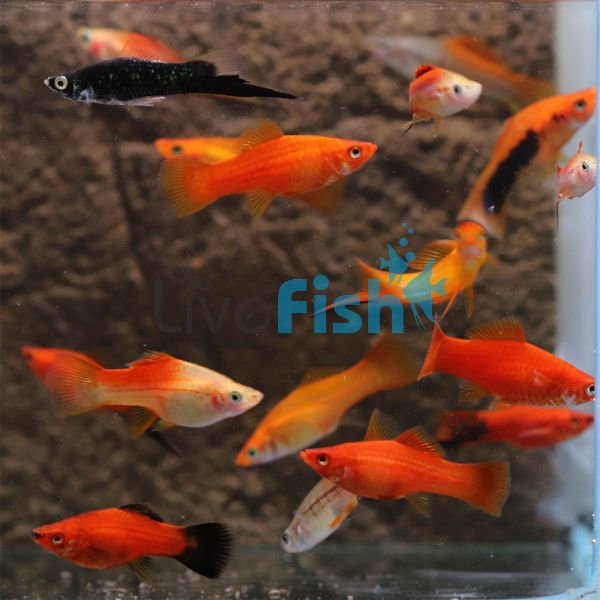Assorted Swordtail 4cm
EXAMPLE IMAGE ONLY!
Swordtails are one of the most common and popular aquarium fish in the world for all the right reasons. They come in an array of colours, look super unique, and are quite easy to take care of. The most loved feature of this fish is the long extension seen on the tail of the male fish which looks like the blade of a sword. In some cases, the sword can be just as long as the fish itself which is stunning to see.
Assorted Swordtail
Swordtails are one of the most common and popular aquarium fish in the world for all the right reasons. They come in an array of colours, look super unique, and are quite easy to take care of. The most loved feature of this fish is the long extension seen on the tail of the male fish which looks like the blade of a sword. In some cases, the sword can be just as long as the fish itself which is stunning to see.
Through the years of selective breeding, the swordtail now comes in an assortment of colours but the most common colours are generally varying shades of red, white, orange, and black. Because of all the ranging colours, it looks stunning to have a large group of these fish in an aquarium. It’s often a hard choice to select a single strain from the multitude of colours available which is why the assorted swordtail option offered by LiveFish contains a mix of these fish along with the opportunity to get males and females.
Breeding swordtails in the home aquarium is a super easy task that often requires no effort from you. Since these fish are livebearers, the females will drop fully formed baby swordtails which totally avoids the process of rearing eggs. Males and females are easily distinguished as male swordtails have long extensions on their tails whereas females do not. The wild habitat of the natural swordtail is widespread from South America to Mexico.
Tank Recommendations for your Assorted Swordtail
Swordtails reach around 7 cm when fully grown, this is excluding the extension on the tail as this can grow just as long as the fish itself. The ideal aquarium size to keep a small group of 5-7 swordtails would be a 70-liters aquarium. This ensures there is ample space for the fish and room for potential breeding as well.
A sand or gravel substrate would be fine for these fish as well as a lot of plant growth which not only makes them contrast really well but also makes for handy locations where swordtail fry can grow. Platies are in fact considered to be a ‘hard’ water fish meaning they prefer the water to have an elevated PH and are not like a tetra. This higher PH of 7 - 8 can be achieved with a PH buffer or African cichlid lake conditioning salts.
Suitable Tank Buddies
The swordtail is a very peaceful aquarium fish. They are great with a wide range of nano aquarium fish however males can be highly prone to certain fin nipping species so these should be avoided. The other factor is that swordtails are fish that needs higher PH so keeping them with south American tetras may not be very suitable as these lower PH.
Usually Compatible
Pseudomogil species such as fork-tail rainbows, blue eyes, rice-fish, and nano aquarium fish can tolerate hard water conditions.
Sometimes Compatible
Medium growing or possibly fin nipping species. Bettas should also be avoided because of their similar flashy nature to swordtails which could lead to aggression from the betta's end.
Rarely Compatible
Large and aggressive species would prey on the swordtails such as Oscars, or jaguar cichlids.
Feeding your Assorted Swordtail
Swordtails are very easy to feed once they are settled into the aquarium. They will readily take a wide range of foods but would prefer to have a floating nano pellet or flake due to their top dwelling behavior. Giving them nutritional food with good protein and varied ingredients can result in the colours of the swordtails being further enhanced.
| Scientific Name | Xiphophorus helleri |
|---|---|
| Care Level | Easy |
| Common Names | Swordtail |
| Diet | Omnivore |
| Fish Family | Poeciliidae |
| Lifespan (years) | 5 |
| Max. Length (cm) | 7 |
| Min. Tank Volume (l) | 70 Liters |
| Origin | South America |
| Reef Safe | Yes |
| Sociability | Peaceful |
| Venomous | No |
| Water Conditions | 24-26° C, pH 7.0-8.0 |




